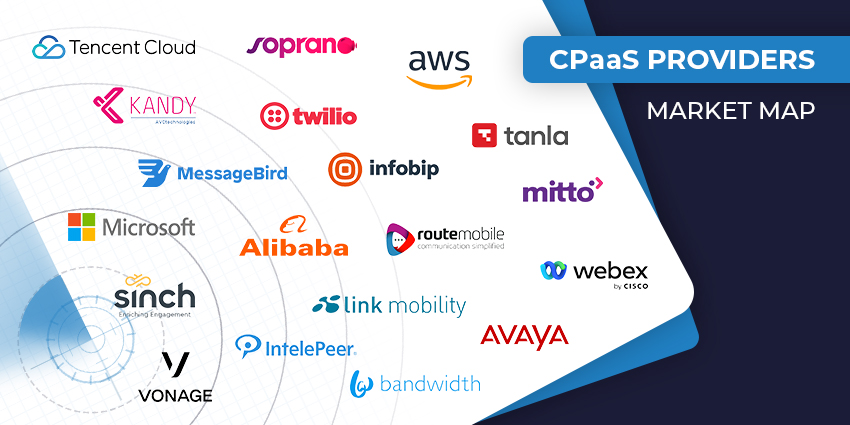The hybridisation of communication solutions gives enterprises a range of options to streamline and strengthen communications experiences for customers and employees. But the blurring lines between one offering and the next also can make finding the right solution more challenging.
CPaaS (communications platform as a service) or UCaaS (unified communications as a service)? How might managed network services, such as a managed SD-WAN and/or a security solution, fit into the mix? And what about CCaaS (contact center as a service)? Navigating the alphabet soup of options to identify the appropriate combination of communications products, features, services and support can indeed be a frustrating undertaking. Today in particular, we come across more IT decision-makers struggling to choose between CPaaS and managed, cloud-based unified communications as a service, or UCaaS. They know their organisation needs to deliver a communications experience that is robust, secure, scalable, and seamless to users and, of course, cost-effective to operate. They have been told that both CPaaS and UCaaS can provide all that. So which option is best?
The answer: It depends — on your organisation’s strategic priorities, in-house capabilities, cost sensitivity, appetite for troubleshooting and other factors.
To help your organisation answer the “CPaaS or managed cloud UC?” question, let’s look at the types of businesses that tend to profile best for each.
Your organisation might be best suited for CPaaS… If it has a hands-on, do-it-yourself development mindset, legacy apps it wants to preserve and enhance going forward, and a preference for control and customisation; if that mindset is backed by a skilled, well-resourced in-house development team and leadership that is committed to continuing to resource that development team; and if that IT team has the capability and capacity to mobilise for network troubleshooting/emergency response.
There’s a good reason spending on CPaaS is projected to grow from $2 billion just a few years ago, in 2017, to $10.9 billion in 2022, according to IDC: It gives businesses a cloud-based framework to integrate various real-time communications capabilities, from voice and video to instant messaging and online chat, into existing applications, without having to build additional backend infrastructure, plus the flexibility to add other communications tools to enrich the employee and customer experience. CPaaS platforms typically come with open software development kits, standards-based APIs, sample code, pre-built applications and other tools for internal development teams to use to customise communications systems and the apps that run on them. CPaaS is also appealing because it can run on top of most existing communications systems and stacks.
The responsibility for configuring, coding, integrating, maintaining and troubleshooting all this, and for managing and meshing relationships with the multiple third-party vendors that may be involved, comes down to the enterprise itself and its IT teams. That’s just fine for some businesses because of the extra level of control they get in creating and overseeing their own customised communications systems.
However, not all businesses have the internal capabilities, appetite or wherewithal to assume all those responsibilities, and to execute them well, and may be better off with a managed solution.
Your organisation might be best suited for managed cloud UC, or UCaaS… If it has a clear preference for outsourcing communications tech responsibilities, from development, training and implementation to maintenance and troubleshooting, so the enterprise can focus on its core business; if cost is a major consideration; if it wants to leverage the scale and mindshare associated with UCaaS; and if it wants the option of accessing other managed services from the same provider, such as managed SD-WAN and CCaaS.
The edict comes down from company leadership: Become a fully digitally enabled enterprise with the ability to deliver a consistent, real-time, fully integrated and multichannel communications experience, AND maintain a laser-like focus on the core business. While these two strategic priorities aren’t mutually exclusive, many organisations prefer to outsource the responsibilities associated with creating and maintaining the communications experience so they and their IT teams can focus on core aspects of the business.
In cases like this, a managed cloud unified communications solution may be the best option. Nowadays, many organisations want their IT teams to focus more on exploring and developing strategic revenue-generation opportunities, and less on day-to-day network upkeep, management and troubleshooting. The managed component of UCaaS allows them to do just that. They get all the real-time communications capabilities in a single, integrated cloud-based format, and if their UCaaS provider is worth its salt, they also get a capable professional services team to consistently monitor and maintain their systems, provide upgrades and problem-solve as needed. Technology obsolescence is no longer a worry, nor is juggling multiple vendors. The enterprise can turn to that same provider for other solutions, such as to orchestrate a network migration to managed SD-WAN, for example, or to gain the added protection of a managed security solution. Generally speaking, working with a single provider instead of multiple vendors, and outsourcing management responsibilities to that provider instead of assuming those duties in-house, can spare an enterprise a lot of headaches.
It may also save them money. Because the UCaaS provider can spread costs across multiple enterprise customers, the cost to the business for a robust communications platform may be lower. What’s more, an enterprise can opt to implement a UC solution in phases, functioning in a hybrid environment to gauge how the solution is working before fully scaling it across the organisation.
Such a measured approach seems wise in a world where the choices an enterprise has for meeting its communications goals are many — and rarely clear-cut.
Guest Blog by Austin Herrington, Vice President of Enterprise Voice Product Management, Windstream Enterprise
Austin oversees the enterprise product strategy and roadmap where he and his team develop, manage and market advanced products and services offered to customers nationwide, executing programs to help businesses achieve a perpetual state of winning.







